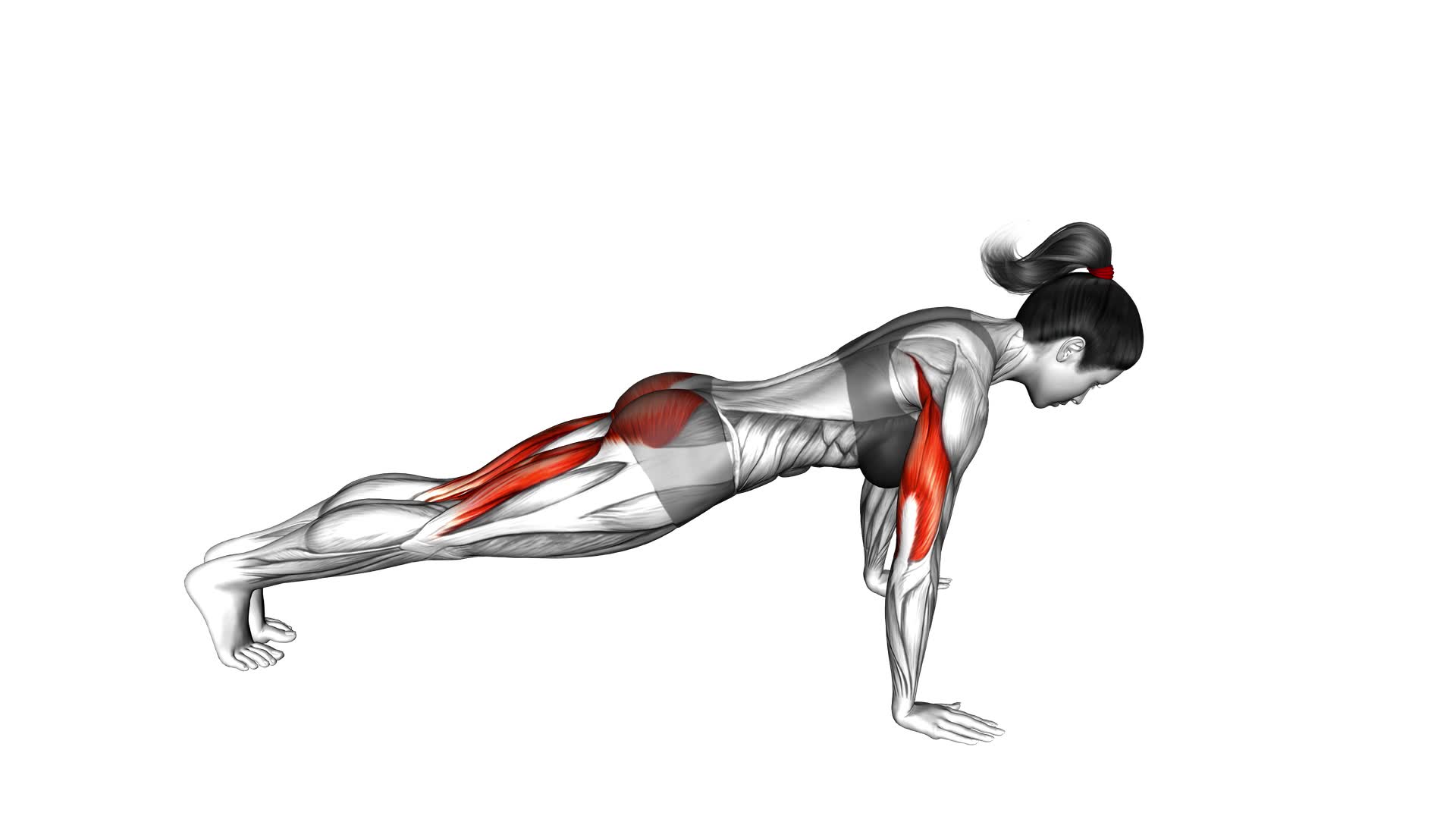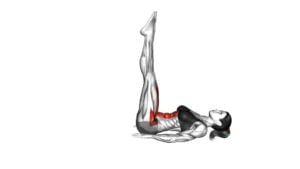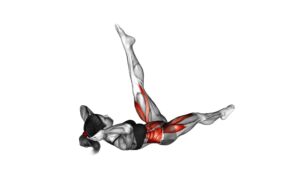Raise Single Leg Push up (female) – Video Exercise Guide & Tips

Are you looking to level up your fitness routine? If so, the Raise Single Leg Push up is the exercise for you. This challenging move targets your upper body and core, helping you build strength and stability.
Watch This Exercise Video
In this video exercise guide, we'll show you the proper form and technique, as well as modifications for different fitness levels. Get ready to take your push up game to the next level and achieve impressive results.
Let's dive in!
Key Takeaways
- The raise single leg push up targets upper body and core muscles.
- It improves overall strength, balance, coordination, and muscular endurance.
- Beginners can start with knee push-ups and progress to full raise single leg push-ups.
- Advanced variations include using a stability ball for an extra challenge.
Benefits of the Raise Single Leg Push up
You will experience numerous benefits when performing the Raise Single Leg Push up. This exercise not only targets your chest, shoulders, and triceps like a regular push up, but it also engages your core and lower body muscles, making it a great full body workout.
During a Raise Single Leg Push up, your chest, shoulders, and triceps work hard to push your body up from the ground. At the same time, your core muscles contract to stabilize your body, and your glutes and hamstrings engage to lift and hold one leg off the ground. This combination of muscle activation helps improve overall strength and stability.
Incorporating the Raise Single Leg Push up into a full body workout routine can be highly effective. By adding this exercise to your routine, you can increase the intensity and challenge of your workouts. It not only helps to develop upper body strength, but it also improves balance and coordination. Furthermore, the engagement of the core and lower body muscles in this exercise helps to enhance overall muscular endurance and stability.
Now that you know about the benefits of the Raise Single Leg Push up, let's move on to the next section, where we'll discuss the proper form and technique for beginners.
Proper Form and Technique for Beginners
To perform the Raise Single Leg Push up with proper form and technique as a beginner, it's important to consistently practice and focus on your body alignment and movement. One common mistake beginners make isn't maintaining a straight line from head to toe. It's crucial to keep your body in a plank position throughout the exercise, engaging your core muscles to stabilize your body. Another common mistake is allowing your hips to sag or lift too high. This can put unnecessary strain on your lower back and decrease the effectiveness of the exercise. Proper form requires keeping your hips level with the rest of your body.
A common misconception is that you need to perform the Raise Single Leg Push up with your leg raised high in the air. However, as a beginner, it's best to start with a smaller range of motion. Lift your leg only slightly off the ground, focusing on maintaining balance and stability. As you become more comfortable and stronger, you can gradually increase the height of your leg raise.
Remember to breathe throughout the exercise, exhaling as you push yourself up and inhaling as you lower yourself down. By practicing proper form and technique consistently, you'll improve your strength, stability, and overall fitness level.
Modifications for Intermediate Level
One modification for an intermediate level of the Raise Single Leg Push up is to increase the range of motion by raising the leg higher off the ground. This modification challenges your core and upper body strength even more than the basic version of the exercise.
To perform this modification, start in a push-up position with your hands slightly wider than shoulder-width apart and one leg lifted off the ground. As you lower your body towards the ground, raise your leg higher, aiming to bring it parallel to the ground. This increased range of motion will engage your muscles more intensely and help you progress towards the advanced level of the exercise.
To progress to the Raise Single Leg Push up from beginner to intermediate level, it's important to focus on proper form and technique. One of the common mistakes to avoid during the raise single leg push up is sagging your hips or lifting your leg too high, which can compromise your stability and put strain on your lower back. Instead, maintain a straight line from your head to your heels and aim to raise your leg to a comfortable height without compromising your form.
As you become more comfortable with the exercise, gradually increase the height at which you raise your leg to further challenge your muscles. Remember to always listen to your body and progress at a pace that feels right for you.
With consistent practice and proper form, you'll be able to master the Raise Single Leg Push up at the intermediate level.
Advanced Variations for Experienced Individuals
To further challenge your core and upper body strength, an advanced variation of the Raise Single Leg Push up is to perform the exercise with a stability ball. This exercise modification requires a high level of stability and control, making it ideal for experienced individuals.
To perform the advanced version, start by placing your feet on top of a stability ball in a push-up position. Engage your core and lift one leg off the ball, keeping it extended straight behind you. As you lower your chest towards the ground, continue to balance on the stability ball and keep your leg elevated. Push back up to the starting position, maintaining control and stability throughout the movement.
Performing the Raise Single Leg Push up with a stability ball provides advanced modifications to the standard exercise, targeting your core, upper body, and balance simultaneously. However, there are common mistakes to avoid when attempting this variation. It's important to maintain proper form and control throughout the exercise, as losing balance can lead to injury. Additionally, avoid arching your back or allowing your hips to sag, as this can put unnecessary strain on your lower back.
Transitioning into the subsequent section about 'tips to maximize your results with this exercise', focus on maintaining proper form and gradually progressing to more challenging variations.
Tips to Maximize Your Results With This Exercise
Get the most out of your Raise Single Leg Push up by focusing on proper form and gradually increasing the intensity. To maximize your results with this exercise, it's important to avoid common mistakes and use the right equipment.
One common mistake people make is allowing their hips to sag or their back to round during the movement. This not only reduces the effectiveness of the exercise but also puts unnecessary strain on your lower back. To maintain proper form, engage your core muscles and keep your body in a straight line from head to toe throughout the movement.
Another mistake to avoid is rushing through the exercise. Take your time and focus on the quality of each repetition rather than the quantity. Slow and controlled movements will engage your muscles more effectively and lead to better results.
When it comes to equipment, all you need for the Raise Single Leg Push up is a mat or a comfortable surface to perform the exercise on. However, if you want to increase the intensity, you can use a stability ball or a TRX suspension trainer to add instability and challenge your muscles even more.
Frequently Asked Questions
How Many Calories Does the Raise Single Leg Push up Burn?
When you perform the raise single leg push up, you aren't only working on your upper body strength, but also burning calories in the process.
This exercise engages multiple muscle groups, which increases your heart rate and helps you burn more calories.
Additionally, the single leg variation challenges your balance and stability, further enhancing the calorie-burning potential.
Can the Raise Single Leg Push up Help Improve Balance and Stability?
Yes, the raise single leg push up can definitely help improve your balance and stability. By performing this exercise, you engage multiple muscle groups, including your core, glutes, and shoulders, which all play a crucial role in maintaining balance.
Additionally, the single leg variation challenges your stability even further. It also helps to improve flexibility as you have to lift one leg off the ground while maintaining proper form.
What Muscles Are Targeted During the Raise Single Leg Push Up?
During the raise single leg push up, multiple muscles are targeted to improve your upper body strength. The primary muscles worked include the chest, shoulders, triceps, and core.
By elevating one leg, you engage your stabilizer muscles, which helps improve balance and stability.
There are also variations of the single leg push up that target different muscle groups, such as the diamond push up for triceps or the decline push up for the upper chest.
Is It Necessary to Warm up Before Performing the Raise Single Leg Push Up?
Before engaging in any exercise, including the raise single leg push up, it's highly recommended to warm up. Warming up prepares your muscles and joints for the upcoming workout, reducing the risk of injury. It increases blood flow, improves flexibility, and enhances overall performance.
If the raise single leg push up is too challenging, alternative exercises like regular push ups or knee push ups can be performed to target the same muscle groups.
Can the Raise Single Leg Push up Help Prevent Injuries?
The raise single leg push up is an effective exercise that can improve overall strength and endurance. By challenging your core stability and upper body strength, it helps to build muscle and increase power.
In terms of injury prevention, this exercise can be beneficial as it strengthens the muscles around your joints, providing more stability and support.
Additionally, there are variations of the raise single leg push up, such as using an exercise ball or adding a twist, to further enhance the challenge and target different muscle groups.
Conclusion
In conclusion, the raise single leg push up is a challenging exercise that targets multiple muscle groups, particularly the core, chest, and arms.
By following proper form and technique, beginners can gradually build strength and stability.
Intermediate individuals can modify the exercise to increase difficulty, while advanced individuals can try advanced variations for an even greater challenge.
Remember to always prioritize safety and listen to your body's limits.
With consistent practice and proper execution, you can maximize your results with this exercise.

Author
Years ago, the spark of my life’s passion ignited in my mind the moment I stepped into the local gym for the first time. The inaugural bead of perspiration, the initial endeavor, the very first surge of endorphins, and a sense of pride that washed over me post-workout marked the beginning of my deep-seated interest in strength sports, fitness, and sports nutrition. This very curiosity blossomed rapidly into a profound fascination, propelling me to earn a Master’s degree in Physical Education from the Academy of Physical Education in Krakow, followed by a Sports Manager diploma from the Jagiellonian University. My journey of growth led me to gain more specialized qualifications, such as being a certified personal trainer with a focus on sports dietetics, a lifeguard, and an instructor for wellness and corrective gymnastics. Theoretical knowledge paired seamlessly with practical experience, reinforcing my belief that the transformation of individuals under my guidance was also a reflection of my personal growth. This belief holds true even today. Each day, I strive to push the boundaries and explore new realms. These realms gently elevate me to greater heights. The unique combination of passion for my field and the continuous quest for growth fuels my drive to break new ground.







